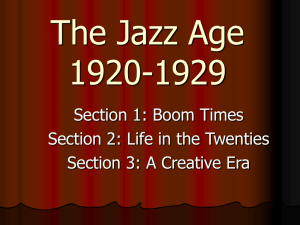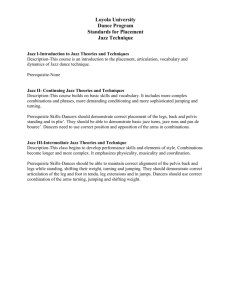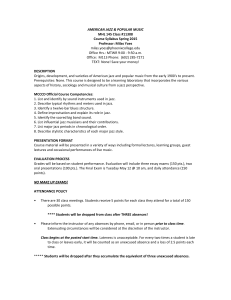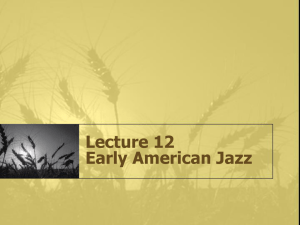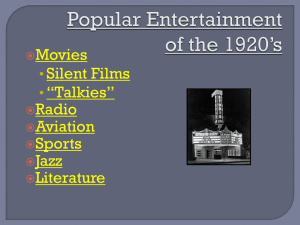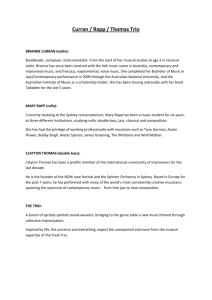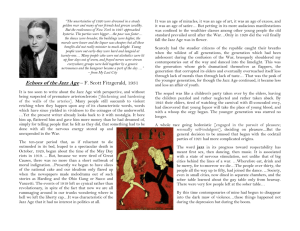The Windy City Scat Final Paper
advertisement
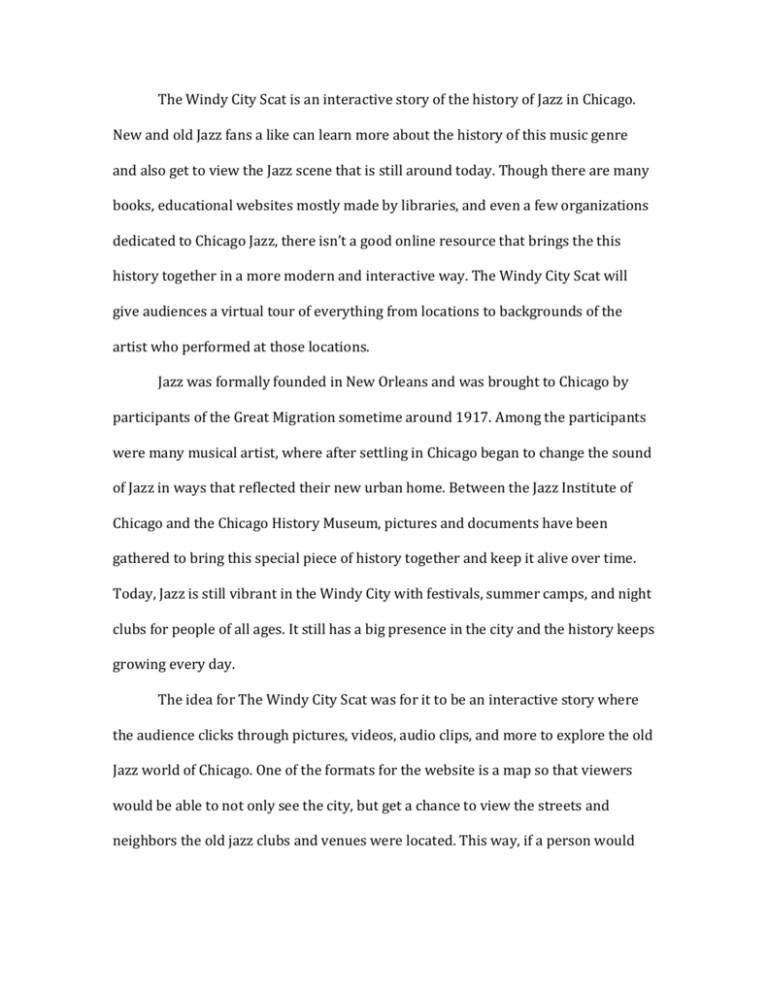
The Windy City Scat is an interactive story of the history of Jazz in Chicago. New and old Jazz fans a like can learn more about the history of this music genre and also get to view the Jazz scene that is still around today. Though there are many books, educational websites mostly made by libraries, and even a few organizations dedicated to Chicago Jazz, there isn’t a good online resource that brings the this history together in a more modern and interactive way. The Windy City Scat will give audiences a virtual tour of everything from locations to backgrounds of the artist who performed at those locations. Jazz was formally founded in New Orleans and was brought to Chicago by participants of the Great Migration sometime around 1917. Among the participants were many musical artist, where after settling in Chicago began to change the sound of Jazz in ways that reflected their new urban home. Between the Jazz Institute of Chicago and the Chicago History Museum, pictures and documents have been gathered to bring this special piece of history together and keep it alive over time. Today, Jazz is still vibrant in the Windy City with festivals, summer camps, and night clubs for people of all ages. It still has a big presence in the city and the history keeps growing every day. The idea for The Windy City Scat was for it to be an interactive story where the audience clicks through pictures, videos, audio clips, and more to explore the old Jazz world of Chicago. One of the formats for the website is a map so that viewers would be able to not only see the city, but get a chance to view the streets and neighbors the old jazz clubs and venues were located. This way, if a person would like to take their own guided tour with the map, they are able to use the points on the map to explore themselves. When creating my website, I decided to use wix.com, a website builder that would allow me to manipulate everything the way I wanted unlike weebly.com. Using wix allowed me to not only use a map, but also a blog and format it the way that I wanted. I was also able to use music and pictures without being limited in posting features. Once I outlined every page, I went to work on the hardest part, which was the research. I wasn’t quite sure where to even start looking. So I started close to home which was to talk to my father and his parents. My father is an avid jazz listener who loves going to Jazz in the Park during the summer. He was able to answer a few questions I had but he sent me over to my grandparents for more of the history part. My grandparents, who are 95 and 93 years old, were born and raised in Chicago, which is rare for African-Americans their age. My grandfather especially loved the idea of doing an online interactive website for the History of Jazz in Chicago. Between him and his wife, I was able to get a number of clubs from the south side of Chicago. My next move was to reach out to the Jazz Institute of Chicago. When I spoke to them, they gave me some tips and ideas on what music to use and where I could find pictures since some of the clubs they don’t have archive photos of. However, they did refer me to Dick Wang, a famous DJ and Jazz historian. When I spoke to him over the phone, he was able to help me pinpoint which neighborhood in Chicago I should focus my prototype on. With all the advice I gathered, I was able to do further research on four clubs to use as an example for my website. The logo for the website was done by me on Photoshop to give the overall look of an old map. Each Jazz Club page is structured so that people can like, share, or even tweet that particular page with friends. A new addition to the website which came when I had a lot of stories between my grandparents and many eager church members was a blog called “Jazz It Up”. On this blog, viewers can read stories or view pictures that have been found or submitted to the Windy City Scat. This way, viewers can contribute their own content and be a part of keeping the history of Jazz in Chicago alive. Each Jazz club page will be linked to it’s own tag in the blog so that people don’t have to search through the blog if they don’t want to. The only big problem I had with the project was the map, which was to be the main part of the whole website. Currently on the website prototype, I have an example on what I want it to look like and do, the overall look was not how I wanted it to be. However, because I have limited coding abilities and Google Maps did not work in my favor along with other mapping websites, I had to use what would work for me. What I want to change about it is to have a more older looking map that allows you to not only see a picture of what the location looked like, but a brief description on the years it was open as well. What I was able to do, however, was link each club page to the description on the locations on the map. After completing everything, I know what I can do to really fix it in the future. There aren’t many interactive history websites on the web; especially about the history of Jazz in Chicago. The Jazz community is large and still growing. There are tours, concerts, classes, and programs that run through the city each year. A way to contribute to the learning of this unique and rich history is to be able to provide an online format for people to view and participate in. History is what helped shaped us to what we are today. Music also shapes people and the way they look at life. And since I’m a visual and auditory learner, I thought the best way to express this website is to have a not only visual but audio as well. This way, both new and old fans of Jazz will have multiple options on how they can interact on the website.


